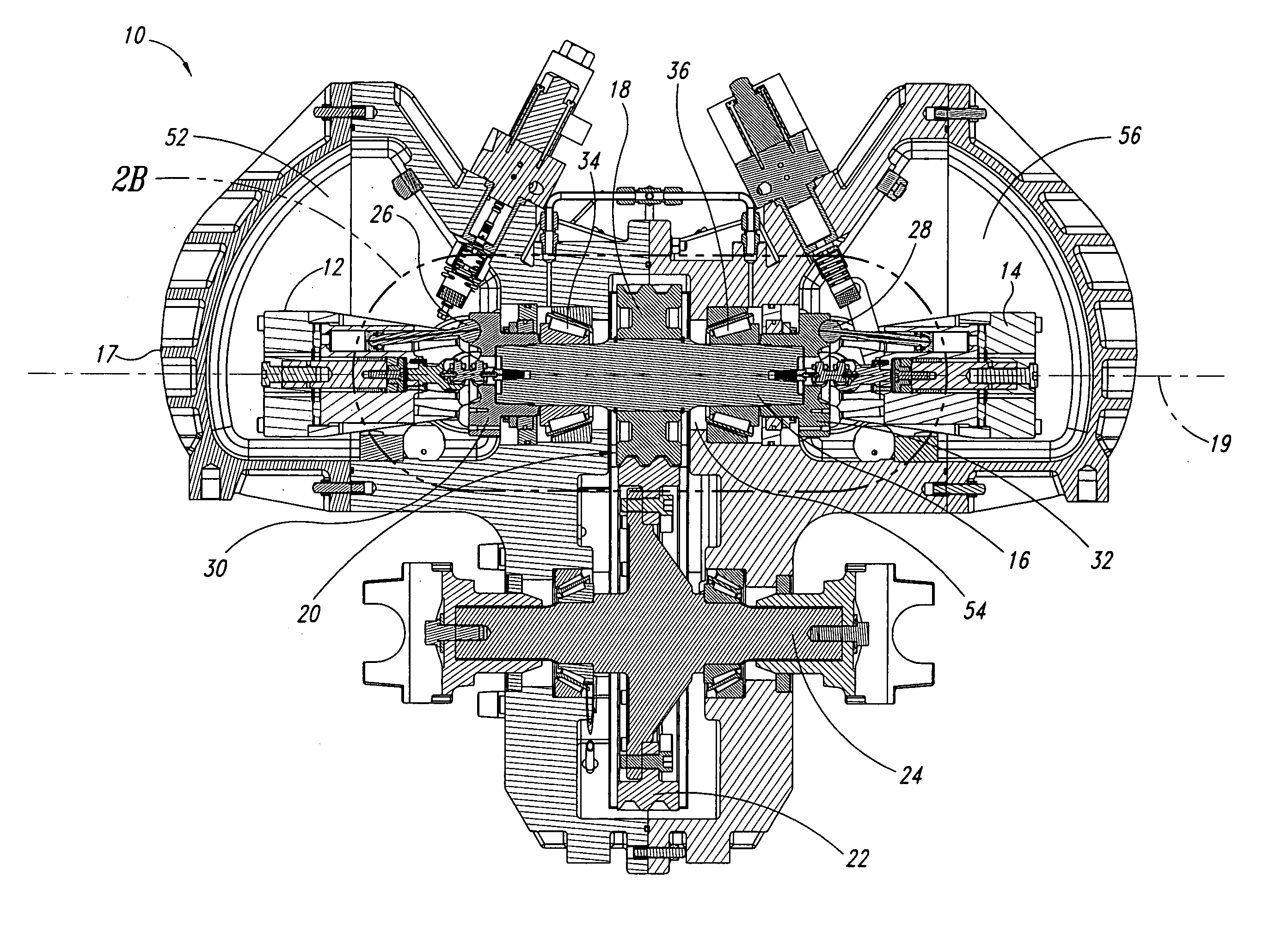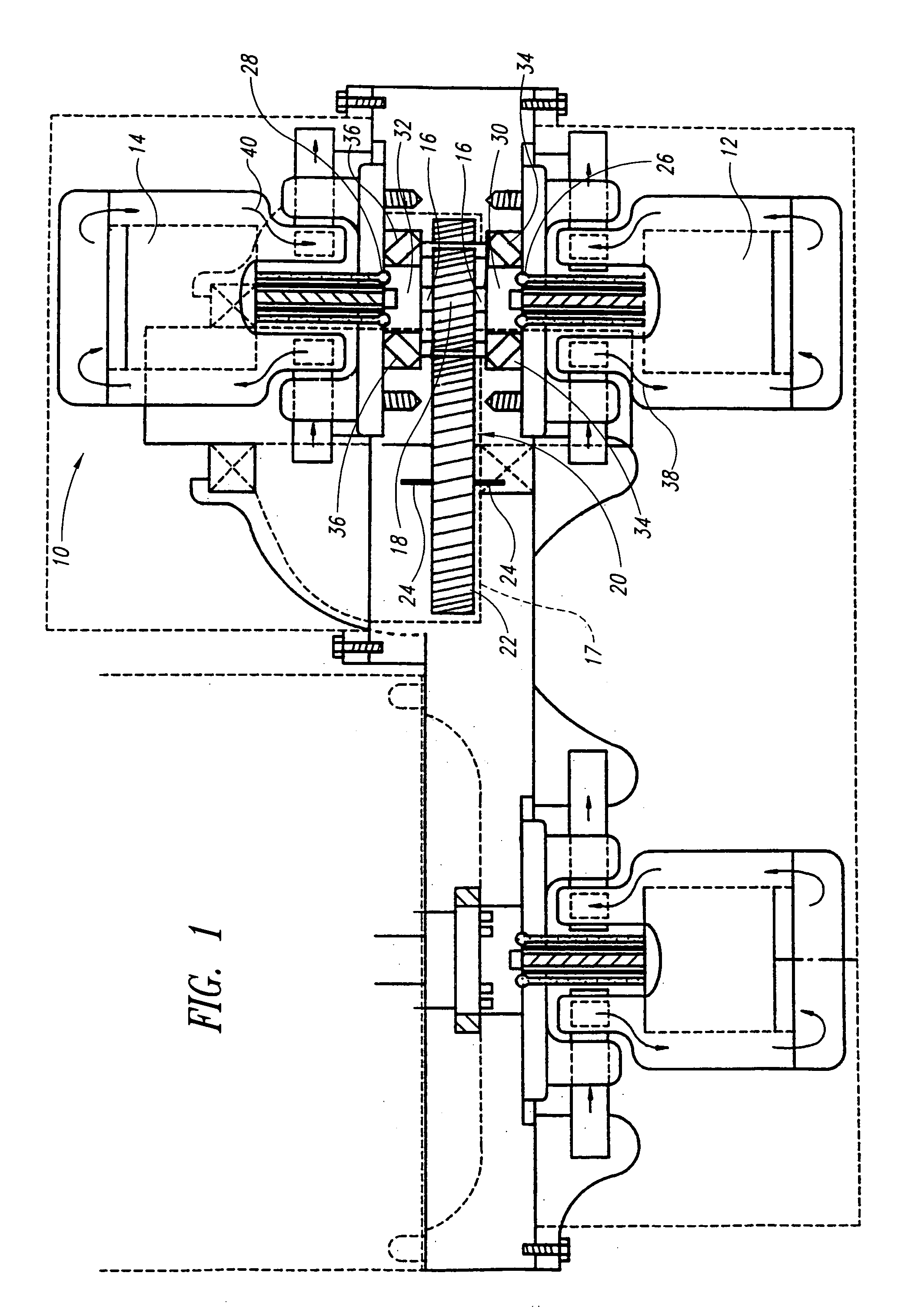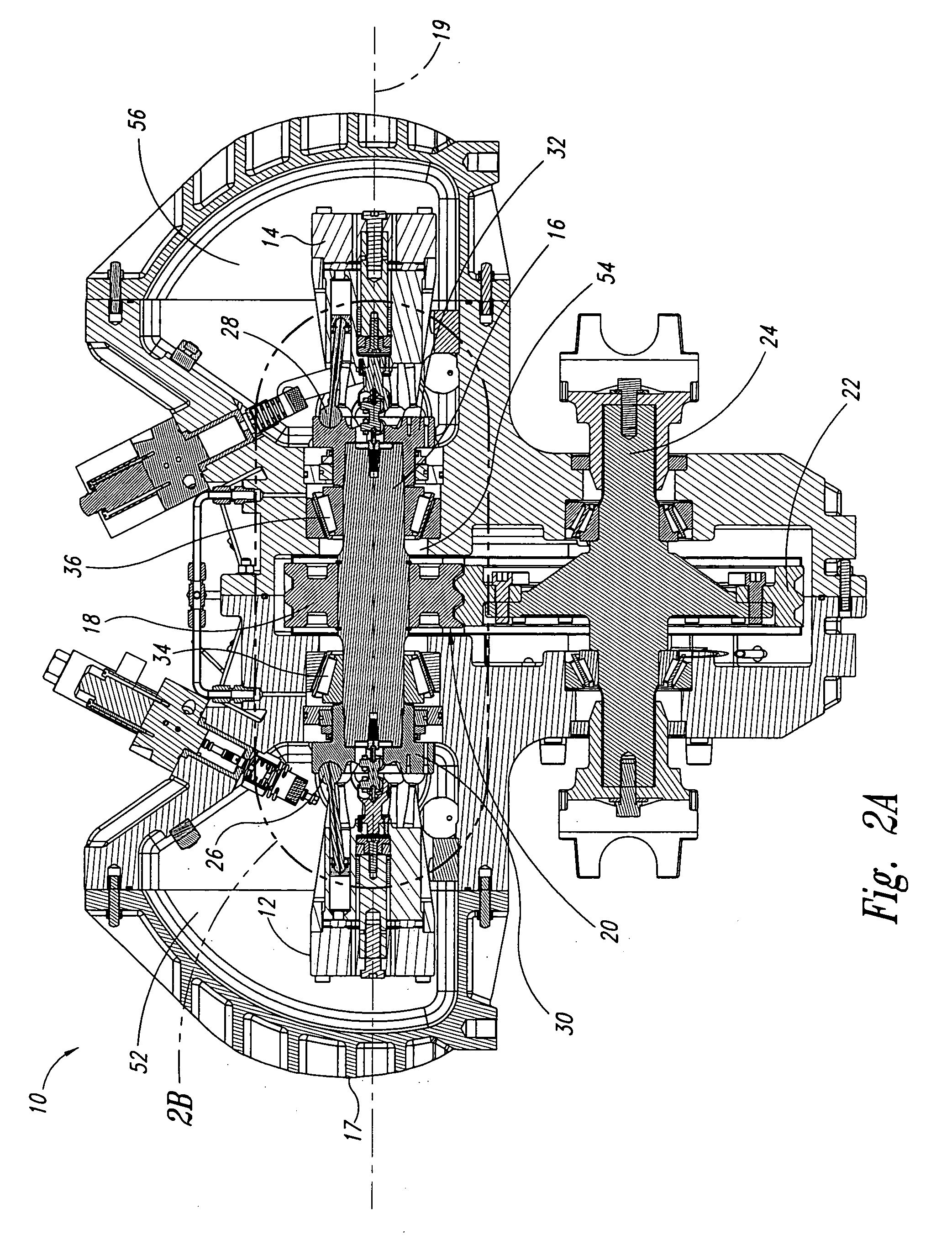Opposing pump/motors
a technology of opposing pumps and motors, which is applied in the direction of piston pumps, hybrid vehicles, gearing, etc., can solve the problems of reducing the life of the bearings, adding to the weight and cost of such systems, and achieving the effect of reducing the size of the bearings, reducing the weight and cost of the system, and increasing the efficiency of the system
- Summary
- Abstract
- Description
- Claims
- Application Information
AI Technical Summary
Benefits of technology
Problems solved by technology
Method used
Image
Examples
Embodiment Construction
[0025] In the following description, certain specific details are set forth in order to provide a thorough understanding of various embodiments of the present invention. However, one of ordinary skill in the art will understand that the present invention may be practiced without these details. In other instances, well-known structures associated with pump / motors, and in particular, bent-axis piston machines, have not been shown or described in detail to avoid unnecessarily obscuring descriptions of the embodiments shown. Although the embodiments of the present invention are described herein, for ease of discussion, as having either a primarily horizontal or primarily vertical orientation, it should be understood that the embodiments of the present invention may be operated at a number of different angles.
[0026] Further, while certain embodiments of the present invention are described herein and in U.S. patent application Ser. No. 09 / 479,844 (the “Parent Application”) in the context...
PUM
 Login to View More
Login to View More Abstract
Description
Claims
Application Information
 Login to View More
Login to View More - R&D
- Intellectual Property
- Life Sciences
- Materials
- Tech Scout
- Unparalleled Data Quality
- Higher Quality Content
- 60% Fewer Hallucinations
Browse by: Latest US Patents, China's latest patents, Technical Efficacy Thesaurus, Application Domain, Technology Topic, Popular Technical Reports.
© 2025 PatSnap. All rights reserved.Legal|Privacy policy|Modern Slavery Act Transparency Statement|Sitemap|About US| Contact US: help@patsnap.com



